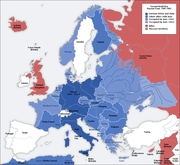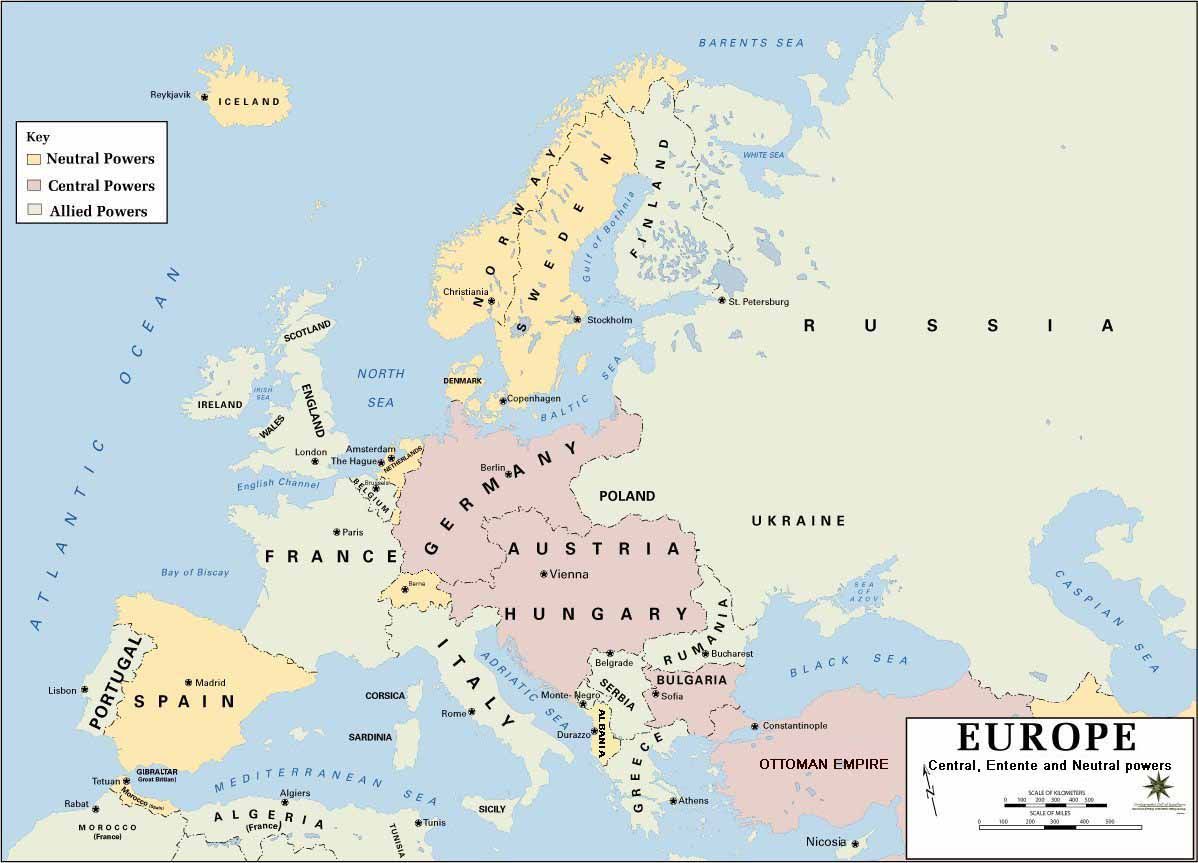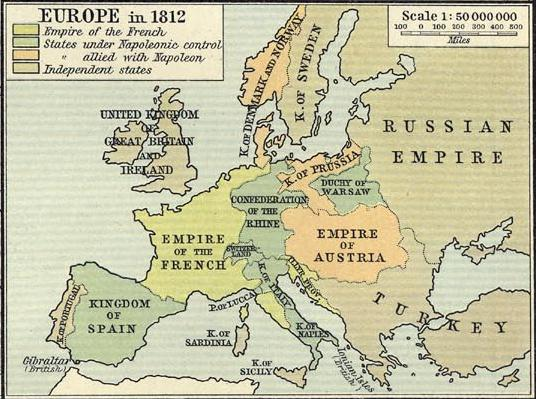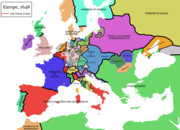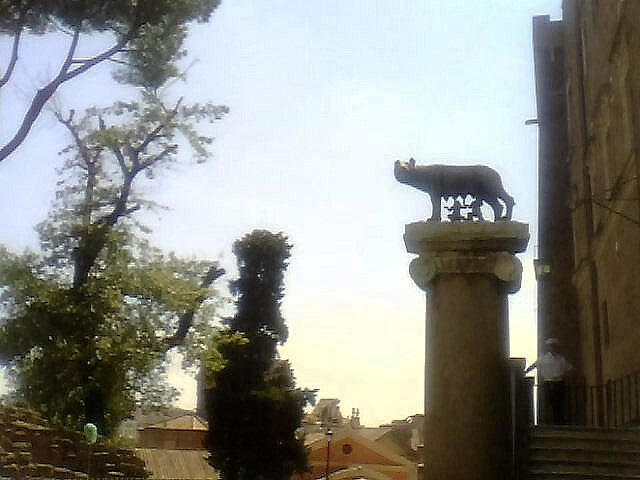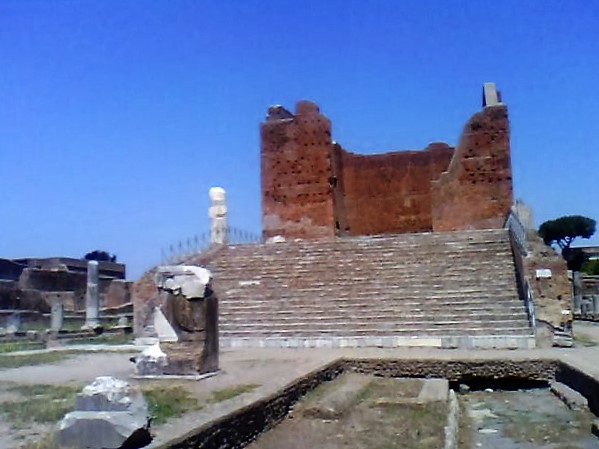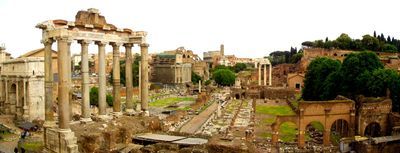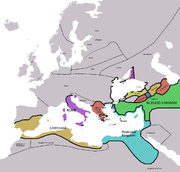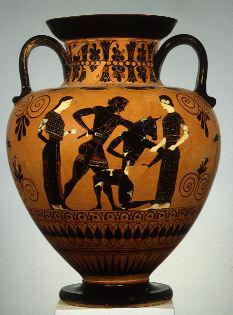The French Revolution -
The storming of the Bastille |
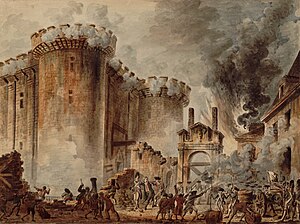 |
By the late 18th century France's finances were in disarray. Lavish royal expenditure and costly wars, such as the French intervention in the American war of Independence, had bankrupted the state. After repeated failed attempts at financial reform, Louis XVI was persuaded to convene the Estates-General, a representative body of the country made up of three estates: the clergy, the nobility, and the commoners.
The members of the Estates-General assembled in Versaille in May 1789, but the debate as to which voting system should be used soon became an impasse. Come June, the third estate, joined by members of the other two, declared itself to be a National Assembly and swore an oath not to dissolve until France had a constitution and created, in July, the National Constituent Assembly.
At the same time the people of Paris revolted, famously storming the Bastille prison on 14 July.On 20 September 1792 the National Convention abolished the monarchy and declared France a republic.
Due to the emergency of war the National Convention created the Committee of Public Safety, controlled by the Jacobin Robespierre, to act as the country's executive. Under Robespierre the committee initiated the Reign of Terror, during which up to 40,000 people were executed in Paris, mainly nobles, and those convicted by the Revolutionary Tribunal, often on the flimsiest of evidence.
Elsewhere in the country, counter-revolutionary insurrections were brutally suppressed. The regime was overthrown in the coup of 9 Thermidor (27 July 1794) and executed.
The regime which followed ended the Terror and relaxed Robespierre's more extreme policies. |
|
| Renaissance &
Reformation |
The Renaissance and the New Monarchs marked the start of a period of discovery, exploration, and increase in scientific knowledge. In the 15th century, Portugal opened the age of discoveries, soon followed by Spain.
They were later joined by France, the Netherlands and England in building large colonial empires with vast holdings in Africa, the Americas, and Asia.
After the age of discovery, the ideas of democracy took hold in Europe. Struggles for independence arose, most notably in France during the period known as the French Revolution. This led to vast upheaval in Europe as these revolutionary ideas propagated across the continent. The rise of democracy led to increased tension within Europe on top of the tension already existing due to competition within the New World.
The most famous of these conflicts happened when Napoleon Bonaparte rose to power and set out on a conquest, forming a new French Empire, which soon collapsed.
After these conquests Europe stabilised, but the old foundations were already beginning to crumble.
|
|
| Industrial Revolution |
The Industrial Revolution started in Great Britain in the late 18th century, leading to a move away from agriculture, much greater general prosperity and a corresponding increase in population. Many of the states in Europe took their present form in the aftermath of World War I. From the end of World War II through the end of the Cold War, Europe was divided into two major political and economic blocks: Communist nations in Eastern Europe and Capitalist countries in Southern Europe, Northern Europe and Western Europe. About 1990, with the fall of the Berlin Wall, the wider Iron Curtain, and the Soviet Union the Eastern Block disintegrate.
European integration has been a theme in European relations since the end of the second World War, and has accelerated since the end of the Cold War. The European Union, the successor to the European Community, has enlarged from 6 original founding members to 27 today. The European Union has developed from a trade-oriented organisation into one resembling a confederation in a number of respects. The European Union, or EU, describes itself as a family of democratic European countries, committed to working together for peace and prosperity. The organisation oversees co-operation among its members in diverse areas, including trade, the environment, transport, security, science, education and employment.
European membership of NATO has also increased since the end of the Cold War, with the admission of a number of Eastern European countries.
Land relief in Europe shows great variation within relatively small areas. The southern regions, however, are more mountainous, while moving north the terrain descends from the high Alps, Pyrenees and Carpathians, through hilly uplands, into broad, low northern plains, which are vast in the east.
This extended lowland is known as the Great European Plain, and at its heart lies the North German Plain. An arc of uplands also exists along the north-western seaboard, beginning in the western parts of Britain and Ireland and continuing along the mountainous, fjord-cut spine of Norway.
This description is simplified. Sub-regions such as the Iberian Peninsula and Italy contain their own complex features, as does mainland Central Europe itself, where the relief contains many plateaus, river valleys and basins that complicate the general trend. Sub-regions like Iceland and Britain and Ireland are special cases. The former is a land unto itself in the northern ocean which is counted as part of Europe, while the latter are upland areas that were once joined to the mainland until rising sea levels cut them off.
Having lived side-by-side with agricultural peoples for millennia, Europe's animals and plants have been profoundly affected by the presence and activities of man. With the exception of Scandinavia and northern Russia, few areas of untouched wilderness are currently found in Europe, except for various national parks. The main natural vegetation cover in Europe is forest. The conditions for growth are very favourable. In the north, the Gulf Stream and North Atlantic Drift warm the continent. Southern Europe could be described as having a warm, but mild climate. There are frequent summer droughts in this region. Mountain ridges also affect the conditions. Some of these (Alps, Pyrenees) are oriented east-west and allow the wind to carry large masses of water from the ocean in the interior. Others are oriented south-north (Scandinavian Mountains, Dinarides, Carpathians, Apennines) and because the rain falls primarily on the side of mountains that is oriented towards sea, forests grow well on this side, while on the other side, the conditions are much less favourable. Few corners of mainland Europe have not been grazed by livestock at some point in time, and the cutting down of the pre-agricultural forest habitat caused disruption to the original plant and animal ecosystems.
Eighty to ninety per cent of Europe was once covered by forest. It stretched from the Mediterranean Sea to the Arctic Ocean. Though over half of Europe's original forests disappeared through the centuries of deforestation, Europe still has over one quarter of its land area as forest, such as the taiga of Scandinavia and Russia, mixed rainforests of the Caucasus and the Cork oak forests in the western Mediterranean.
Glaciation during the most recent ice age and the presence of man affected the distribution of European fauna. As for the animals, in many parts of Europe most large animals and top predator species have been hunted to extinction. The woolly mammoth and aurochs were extinct before the end of the Neolithic period. Today wolves (carnivores) and bears (omnivores) are endangered. Once they were found in most parts of Europe. However, deforestation caused these animals to withdraw further and further. By the Middle Ages the bears' habitats were limited to more or less inaccessible mountains with sufficient forest cover.
Since the Renaissance, Europe has had a dominating influence in culture, economics and social movements in the world. European demographics are important not only historically, but also in understanding current international relations and population issues. Some current and past issues in European demographics have included religious emigration, race relations, economic immigration, a declining birth rate and an ageing population. |
|
